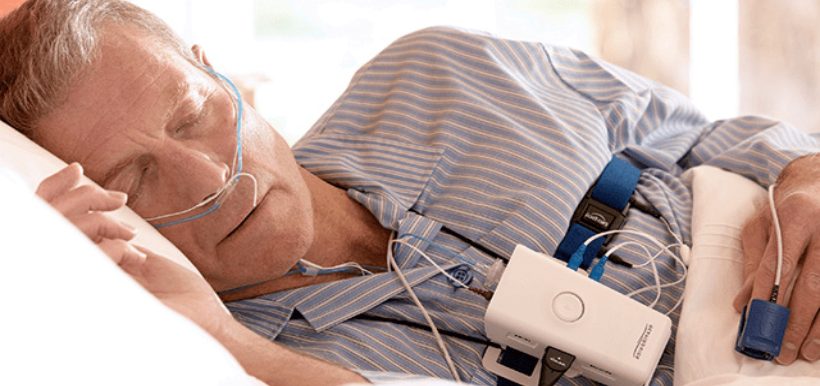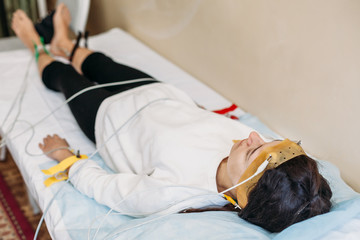Checking out the Advantages of Sleep Studies: A Guide to Improved Rest High Quality
Sleep researches provide an essential window right into the complexities of sleep patterns and disorders. They play a considerable function in identifying problems like rest apnea and insomnia. By analyzing different physical specifications, these assessments lead the way for tailored therapy plans. The ramifications of boosted sleep prolong past remainder, influencing cognitive feature and emotional wellness. The trip doesn't end with a diagnosis-- recognizing the following steps is just as vital.

Understanding Sleep Disorders and Their Effect
Lots of people might ignore the importance of rest, sleep problems can greatly influence overall health and wellness and well-being. These disorders, which consist of conditions such as sleeplessness, rest apnea, and troubled leg syndrome, can result in a range of unfavorable results. Persistent sleep deprivation can impair cognitive function, hinder memory retention, and boost the risk of mental health and wellness concerns such as anxiety and anxiety. On top of that, individuals struggling with rest disorders typically experience physical wellness problems, including heart disease, weight problems, and diabetic issues. The effect of bad rest extends past the person, affecting partnerships and office efficiency. Recognizing the severity of sleep disorders is vital, as they can interrupt not only individual health and wellness yet additionally social functioning. Comprehending these conditions can cause much better awareness and treatment choices, ultimately promoting better rest quality and overall health and wellness.
The Refine of Going Through a Rest Research Study
Undergoing a rest study includes a methodical examination of a person's sleep patterns and habits to identify possible sleep problems. The process normally begins with a consultation, where a healthcare expert gathers described info concerning the patient's sleep practices, case history, and any kind of symptoms experienced. This initial assessment aids establish the necessity of a rest research study.
As soon as deemed essential, the patient timetables an over night remain at a sleep laboratory or establishes tools in the house. Throughout the study, various physical criteria are checked, including mind task, heart price, and breathing patterns. Technicians might make use of sensing units and cameras to observe the client's movements and general rest top quality.
After the research study, the collected data is evaluated, allowing specialists to determine any kind of sleep problems existing. The results educate tailored treatment plans targeted at improving the client's sleep quality, eventually enhancing their general health and well-being.
Kinds of Rest Studies and What They Measure
Rest studies can be classified right into numerous kinds, each created to measure specific aspects of rest and diagnose various sleep conditions. The most typical type is polysomnography (PSG), which tape-records brain waves, oxygen degrees, heart rate, and respiratory system function throughout the evening. This extensive research is essential for detecting problems like rest apnea, narcolepsy, and agitated legs disorder.
One more type is home sleep apnea testing (HSAT), which is less intrusive and usually carried out in the person's home - Sleep Study Bangalore. It largely concentrates on identifying obstructive sleep apnea by measuring air flow, snoring, and blood oxygen degrees
Actigraphy, a 3rd type, entails using a wrist tool that tracks sleep patterns over time, supplying understandings into rest duration and quality. Furthermore, multiple rest latency examinations (MSLT) action daytime sleepiness and are important in detecting narcolepsy. Each research type plays a substantial function in understanding and improving sleep wellness.

Translating Rest Research Results
After a sleep study is conducted, the interpretation of results ends up being fundamental in diagnosing rest problems and directing treatment choices. Health care professionals evaluate numerous data gathered during the study, consisting of sleep phases, duration, and any interruptions in breathing patterns. Trick criteria, such as the Apnea-Hypopnea Index (AHI) and oxygen saturation levels, offer understandings into problems like rest apnea or insomnia.
The medical professional reviews the regularity and seriousness of disturbances, which can suggest the existence of particular conditions. Rest design, reflecting the equilibrium of REM and non-REM rest, is likewise assessed to identify total rest top quality. Accurate interpretation requires considering the client's medical history, symptoms, and lifestyle factors. Eventually, these outcomes not just notify the medical diagnosis however additionally form personalized therapy strategies, guaranteeing that people obtain targeted interventions to boost their sleep top quality and overall health and wellness.
Steps to Boost Rest High Quality After a Research
Once a rest research study has been finished, individuals usually seek efficient methods to boost their rest quality based upon the findings. navigate to this site First, developing a regular sleep schedule can aid manage the body's biological rhythm, making it easier to go to sleep and awaken rejuvenated. Developing a relaxing going to bed regimen, consisting of activities such as analysis or reflection, can signify the body that it is time to relax.
Furthermore, maximizing the sleep setting is important; this consists of maintaining a comfy area temperature, minimizing noise, and guaranteeing darkness (Sleep Study Bangalore). Limiting display time prior to bed is likewise essential, as blue light can interfere with melatonin manufacturing. People need to be mindful of their diet, preventing hefty meals, caffeine, and alcohol close to bedtime. Integrating regular physical activity during the day can advertise much deeper sleep at This Site night. By implementing these strategies, people can considerably enhance their general rest quality

Regularly Asked Questions
For how long Does It Require To Arrange a Rest Research?
Arranging a sleep research generally takes one to four weeks, depending upon the facility's accessibility and the client's specific demands. Variables such as insurance authorizations and clinical examinations may also influence the timeline.
Are Rest Researches Covered by Insurance?
Rest researches are frequently covered by insurance, yet insurance coverage differs relying on the service provider and certain plan. It is necessary for individuals to confirm their insurance plan information to comprehend their financial duties before organizing.
What Should I Give My Sleep Research?
Individuals need to bring comfortable sleepwear, any necessary medications, individual hygiene products, and a favorite pillow or covering. Furthermore, they may consider bringing a checklist of inquiries for the sleep technician concerning the research process.
Can Kid Undergo Sleep Researches?
Yes, youngsters can undergo rest researches. These research studies are created to analyze rest conditions in pediatric people, assisting healthcare specialists create proper treatment strategies to enhance their general sleep quality and health.
Exists Any Type Of Prep work Needed Prior To a Sleep Research study?
Prior to a rest research, individuals should prevent high levels of caffeine, alcohol, and specific medicines. They might also be suggested to preserve a routine sleep schedule and bring comfy apparel, important items, and any type of needed medical records for the analysis.
Rest researches provide an essential window right into the complexities of rest patterns and problems. Going through a sleep study includes an organized analysis of an individual's rest patterns and actions to identify potential rest disorders. Rest researches can be categorized right into numerous types, each designed to measure certain facets of sleep and diagnose different rest problems. After a sleep read what he said research study is performed, the interpretation of outcomes ends up being essential in diagnosing rest disorders and directing therapy alternatives. Sleep architecture, reflecting the balance of REM and non-REM sleep, is additionally assessed to identify overall rest quality.